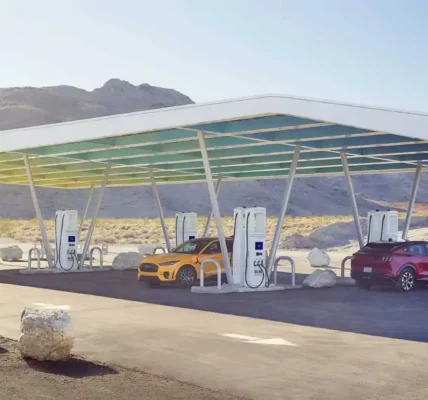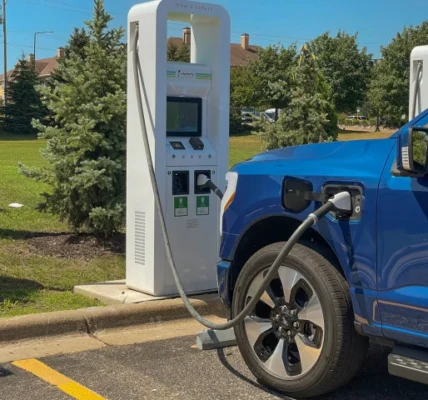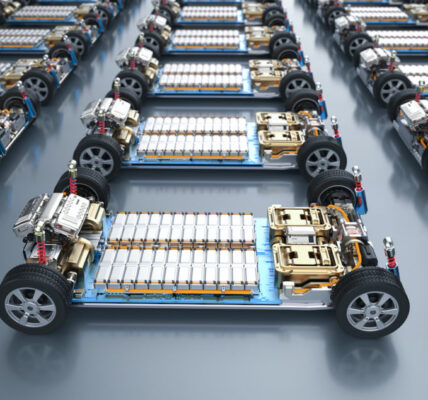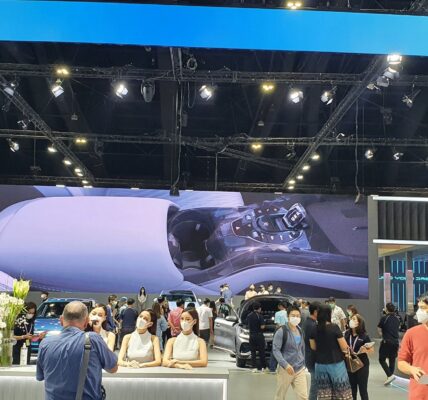As a historic 10-day heat wave threatened brownouts across California last summer, a small San Diego County school district did its part to help: It captured excess power from its electric school buses and sent it back to the state’s overwhelmed grid.
The seven school buses provided enough power for 452 homes each day of the heat wave, and the buses were recharged only during off hours when the grid was not strained.
California energy officials have high hopes that this new power source, called bidirectional charging, will boost California’s power supply as it ramps up its ambitious agenda of electrifying its cars, trucks and buses while switching to 100% clean energy.
Gov. Gavin Newsom called two-way charging technology a “game changer,” saying “this is the future” during a speech last September, about a week after the heat wave ended.
This year, a bill already approved by the state Senate in a 29-9 vote would require all new electric cars sold in California to be equipped with bidirectional technology by 2030. In the Assembly, two committees approved the bill earlier this month and it is now under consideration by a third.
This two-way charging has big potential — but also faces big obstacles. By 2035, California expects to have 12.5 million electric cars on the road, but it’s an open question how much California can rely on them to feed the grid. Automakers say the technology would add thousands of dollars to the cost of an electric car, and California’s utilities are still sorting out how to pay ratepayers for selling them the kilowatt hours.
The ability to use electric cars, trucks and buses to feed energy back into the grid would be especially helpful during peak times for energy use, such as heatwaves. But relying on vehicles as a year-round power source may not be practical — at least not yet.
“It’s a great idea conceptually…but we haven’t had the time to flesh out the details of what needs to happen for California to be able to power itself on electric vehicles,” said Orville Thomas, state policy director for CALSTART, a sustainable energy nonprofit.
“It should be on the menu of options that California has. Is it going to be the number one option? Definitely not.”
“It’s a great idea conceptually…but we haven’t had the time to flesh out the details of what needs to happen for California to be able to power itself on electric vehicles.”
So far, its use has been limited in California. Pacific Gas and Electric has a pilot program — the first in the nation — that lets up to 1,000 residential customers with bidirectional chargers sell power back to the utility. Some school districts also are experimenting with it.
Only about half a dozen electric car models currently are equipped with bidirectional capabilities, including the Hyundai Ioniq 5, Nissan Leaf and Ford F-150 Lightning. Tesla announced recently that all its models will have it by 2025.
Electric vehicles convert one type of energy, alternating current electricity, into another, direct current, which is stored in a battery. Bidirectional charging means that an electric vehicle can convert the energy it has stored in its battery and send it to other sources, such as home appliances or back to the grid.
Willett M. Kempton, a University of Delaware professor who has studied bidirectional charging for more than two decades, said the vast majority of the time a vehicle is parked and not using electricity.
“Five percent of the time you’re using the car and you want to have enough energy — electricity or gasoline — to get to where you’re going and back. But most of the time, it’s just sitting there and some other use could be made of it,” he said.
Kempton said these vehicles, properly managed, could be sources of reserve energy, supplanting backup sources that burn fossil fuels.
Gregory Poilasne, co-founder and CEO of Nuvve Holding Corp., which sells electric fleet charging services, said a big challenge is that cars are unreliable energy assets. “At any time, somebody might come in and unplug the car,” he said. But he added, as the technology becomes more reliable and affordable, bidirectional cars and fleets should increase.








